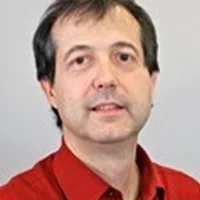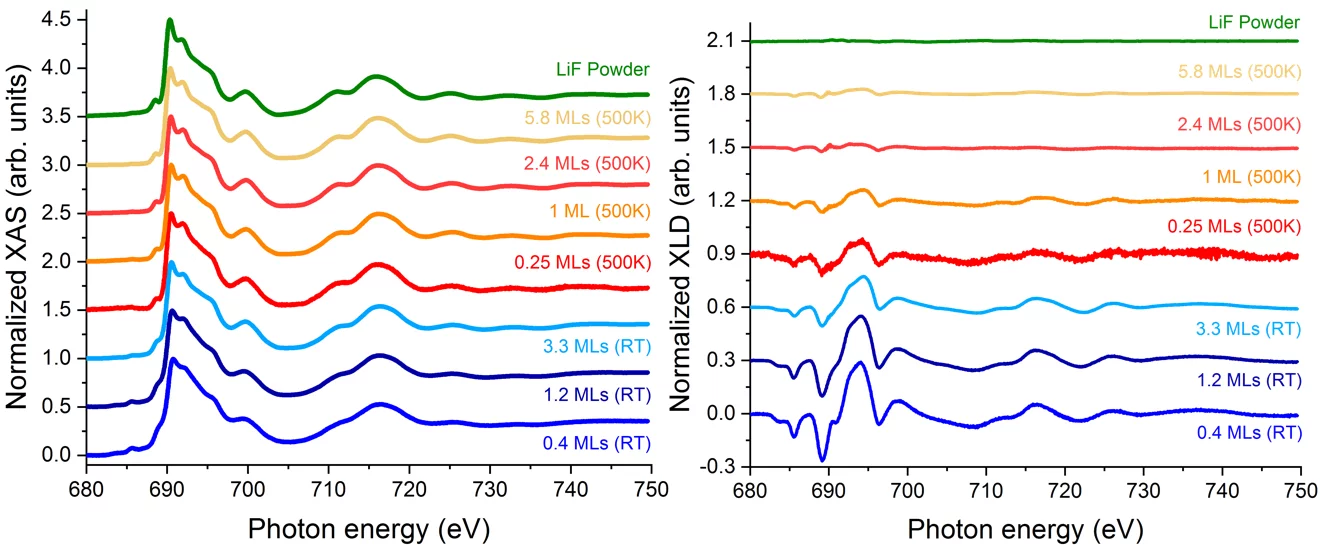Lithium fluoride is an important material which is already technologically exploited in spintronics and organic light emitting devices.
In a recently published experimental study using scanning tunneling microscopy, low-energy electron diffraction and X-ray absorption spectroscopy Vlad Romankov, PhD student at the X-Treme beam line, found that there is a vast difference between the morphologies of ultrathin lithium fluoride grown on the (100) facet of a silver single crystal. At room temperature dendrites are obtained while at elevated temperature lithium fluoride forms square islands. The main growth directions of the dendrites as well as the orientations of the islands' borders were determined. Furthermore, the dendrites were found to grow with an initial, two-atomic-layer-thick double layer in contrast to the islands which start from monoatomic thickness.
The difference between the morphologies can be explained by the anisotropic diffusion during the growth with energy barriers that are overcome only at elevated temperature but not at room temperature. The system is an interesting model to study the crossover between diffusion limited aggregates (dendrites) and island growth.
Contact
Dr. Jan Dreiser
PSI, Photon Science Division
Forschungsstrasse 111, 5232 Villigen PSI, Switzerland
Telephone: +41 56 310 5895
E-mail: jan.dreiser@psi.ch
Original Publication
Morphology of ultrathin lithium fluoride deposited on Ag(100): Dendrites versus islands
Vladyslav Romankov and Jan Dreiser
Physical Review B 104, 195401 (2021)
DOI: 10.1103/PhysRevB.104.195401 (link is external)

